Seven Houses for No One
2011 – 2007
A documented study of the series Seven Houses for No One by Cardillo, presenting poetic images of imagined dwellings conceived for cities such as Barcelona, Melbourne, Nîmes, Parma, Pembrokeshire and Rome. Though never built, these houses—envisioned as imaginal architectures—were perceived as real following their publication in the international press, generating a phenomenon of simulated reality
Introduction
Antonino Cardillo
Antonino Cardillo’s Seven Houses for No One are not mere exercises in architectural fantasy, nor utopian designs destined to remain unbuilt. Though never constructed, these houses were perceived as real following their publication in the international press, generating a phenomenon of simulated reality. Yet their power lies not in simulation, but in revelation: they belong to an intermediate world that Henry Corbin defined as the mundus imaginalis, distinct from both the sensible world and the purely intelligible.
In this ontological space, imagination is not fantasy but a faculty of knowledge. Images are not unreal; they possess metaphysical substance. It is here that the notion of ‘imaginal’ architecture emerges: a form not born of the will to build, but of the necessity to manifest. The ‘Imaginal Houses’—as they are named here in a hermeneutic reading of the work—are not imagined houses in the conventional sense, but archetypal visions arising from depth, appearing within the ʿālam al-mithāl (عالم المثال), the ‘world of visions’ in Islamic theosophy (Suhrawardī, Ibn ‘Arabī), from which Corbin derived his ontology of imagination.
This intermediate world, the ʿālam al-mithāl, is a real—though invisible—region where forms manifest as archetypal likenesses. It is neither mental nor sensory, but a third mode of being, where the image becomes epiphany. In this sense, the Seven Houses for No One are not conceptual projects, but architectures that inhabit the ‘imaginal’ realm: places that do not exist in the physical world, yet act within the realm of deep perception, generating real effects in collective consciousness.
Like Odysseus, who in his journey seeks not a physical dwelling but a return to origin, these houses are for no one because they belong to everyone: forms without a recipient, yet with a universal vocation. They do not ask to be inhabited, but to be contemplated. And in that contemplation, architecture becomes myth, and myth becomes space.
(Text assisted by Copilot), antoninocardillo.com, 12 Sept. 2025.
Notes
- ^ Henry Corbin, ‘Mundus imaginalis, ou l’imaginaire et l’imaginal’, Cahiers internationaux de symbolisme, no. 6, Bruxelles, 1964, pp. 3‑26.
- ^ Shihāb al-Dīn Suhrawardī, Ḥikmat al-Ishrāq, Aleppo, 1186 (year of composition). [Henry Corbin, Institut Franco-Iranien, Tehran–Paris, 1976]; Muḥyī al-Dīn Ibn ʿArabī, Fuṣūṣ al-Ḥikam, Damasco, 1229 (year of composition). [The Bezels of Wisdom, Paulist Press, New York, 1980; tr. R.W.J. Austin]; Henry Corbin, En Islam iranien: aspects spirituels et philosophiques, vol. II, Gallimard, Paris, 1971.
- ^ L.W.C. van Lit, The World of Image in Islamic Philosophy: Ibn Sīnā, Suhrawardī, Shahrazūrī and Beyond, Edinburgh University Press, Edinburgh, 2017; Henry Corbin, Corps spirituel et terre céleste: de l’Iran mazdéen à l’Iran shîʿite, Buchet-Chastel, Paris, 1960.
- ^ Douglas Frame, The Myth of Return in Early Greek Epic, Yale University Press, New Haven, CT, 1978; Gregory Nagy, The Best of the Achaeans: concepts of the Hero in Archaic Greek Poetry, Johns Hopkins University Press, Baltimore, 1979.
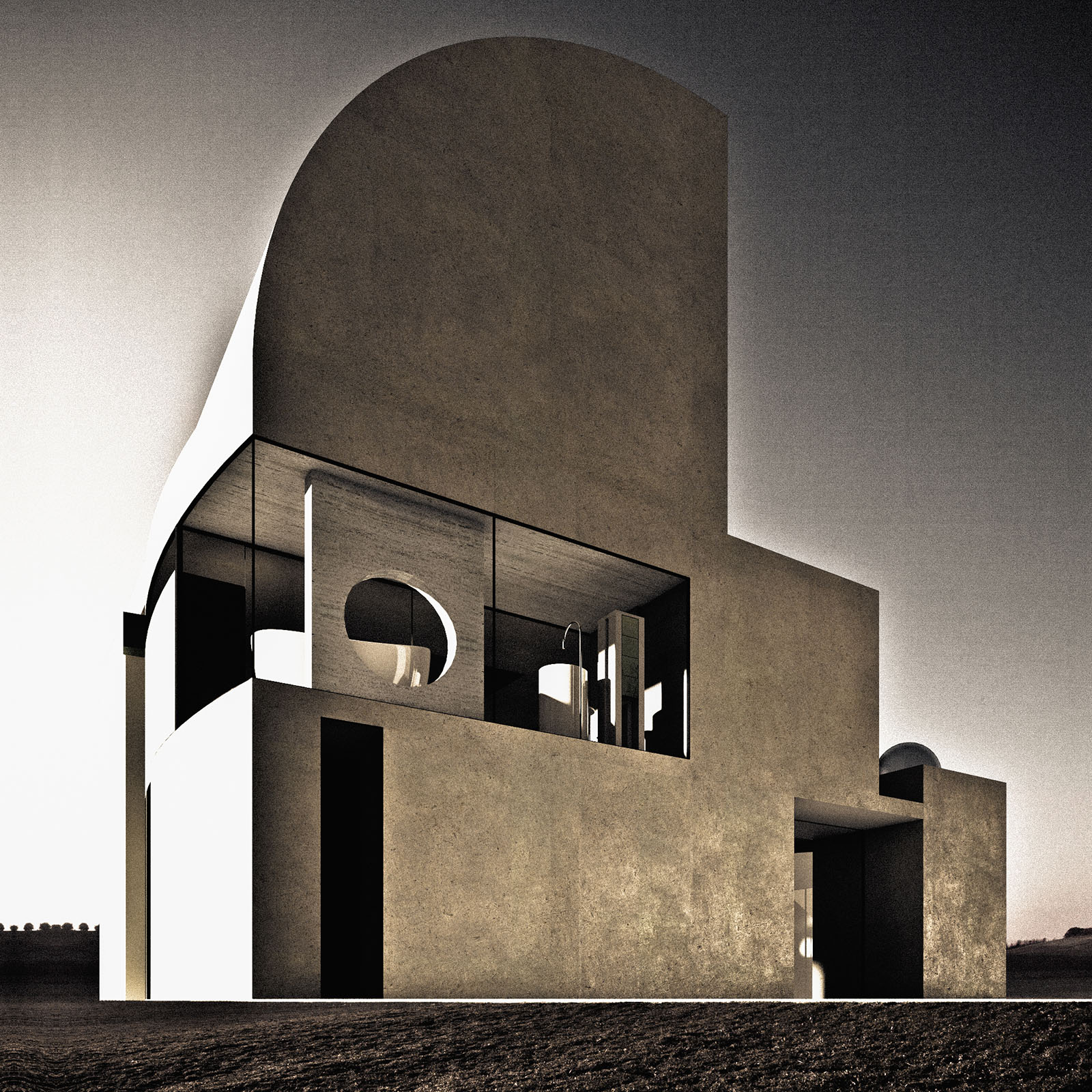
Purple House
Where memory lacks.
Pembrokeshire, 1 June 2011
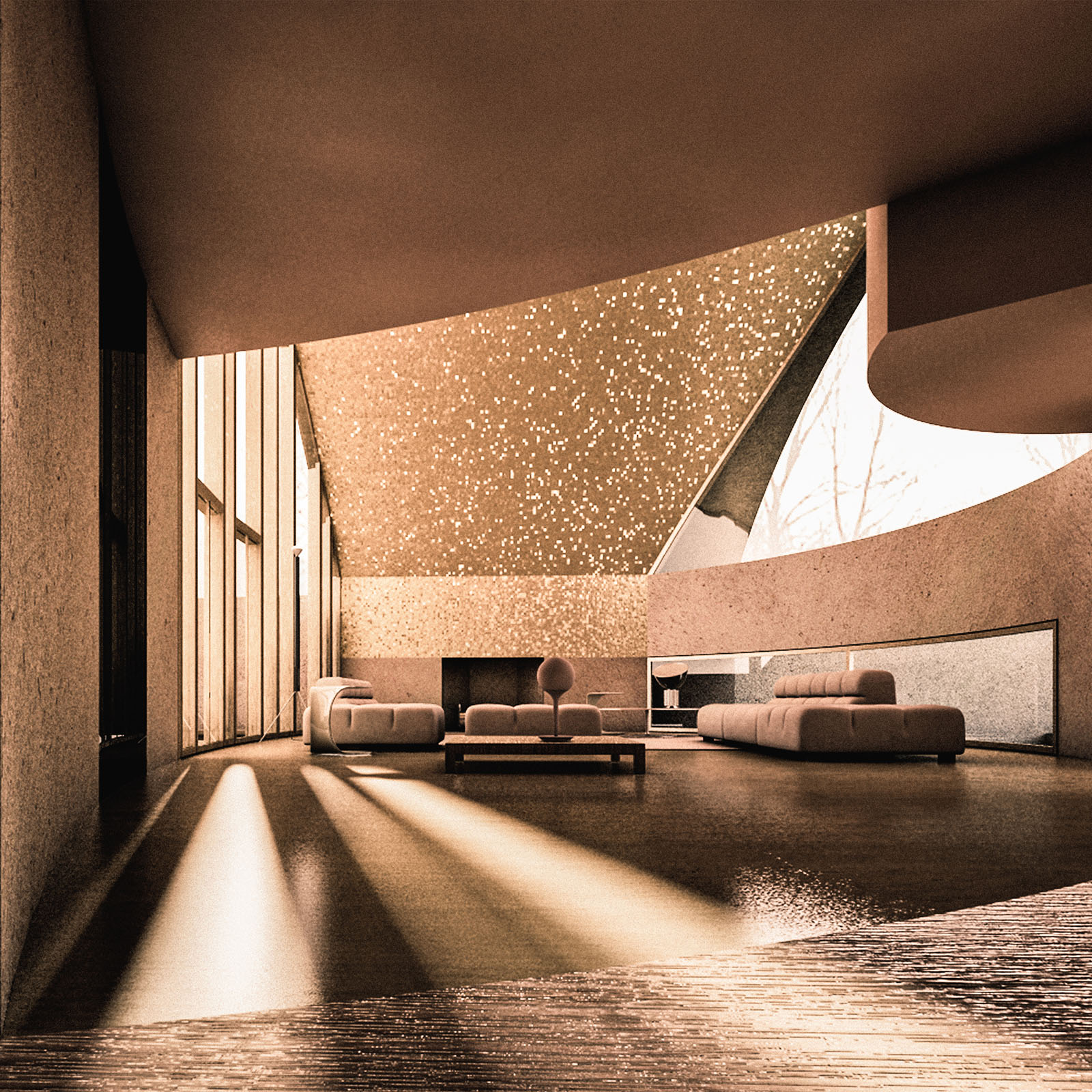
House of Twelve
The ruins as visions.
Melbourne, 1 May 2009
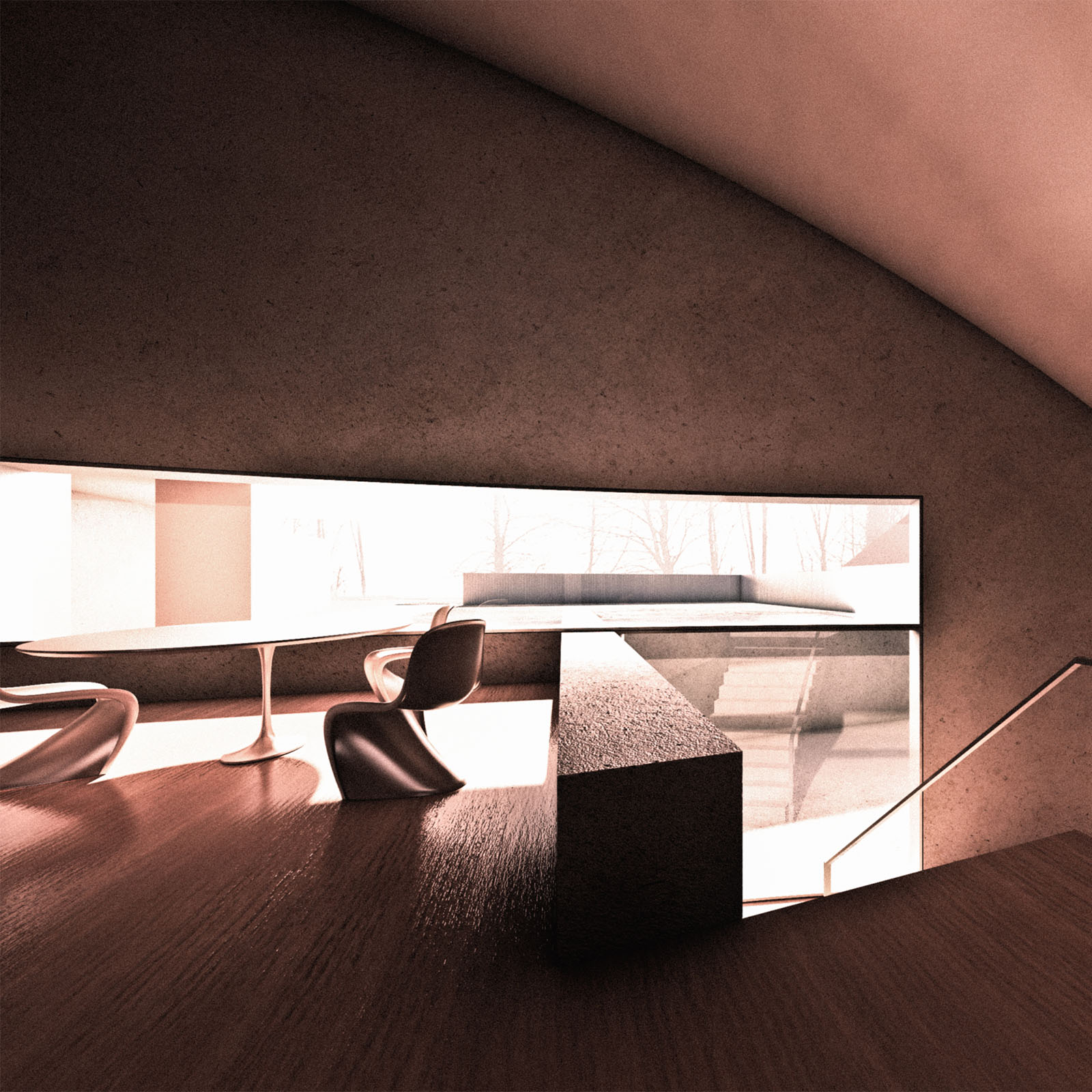
Concrete Moon House
Between two identities.
Melbourne, 1 November 2008
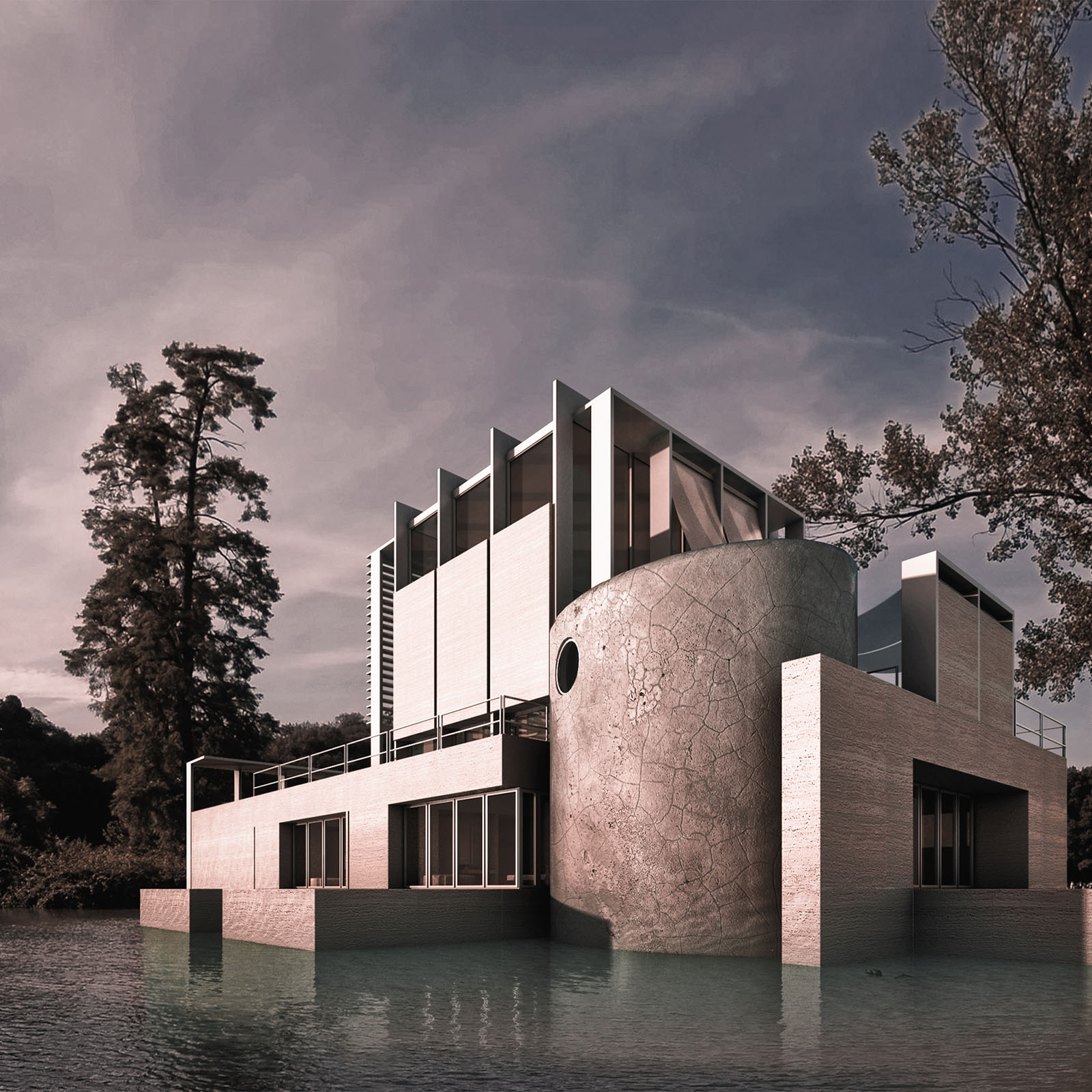
Max’s House in a Small Lake
On the edge of a border.
Nimes, 1 July 2008

House of Convexities
A curved wall jokes with the light.
Barcelona, 1 March 2008
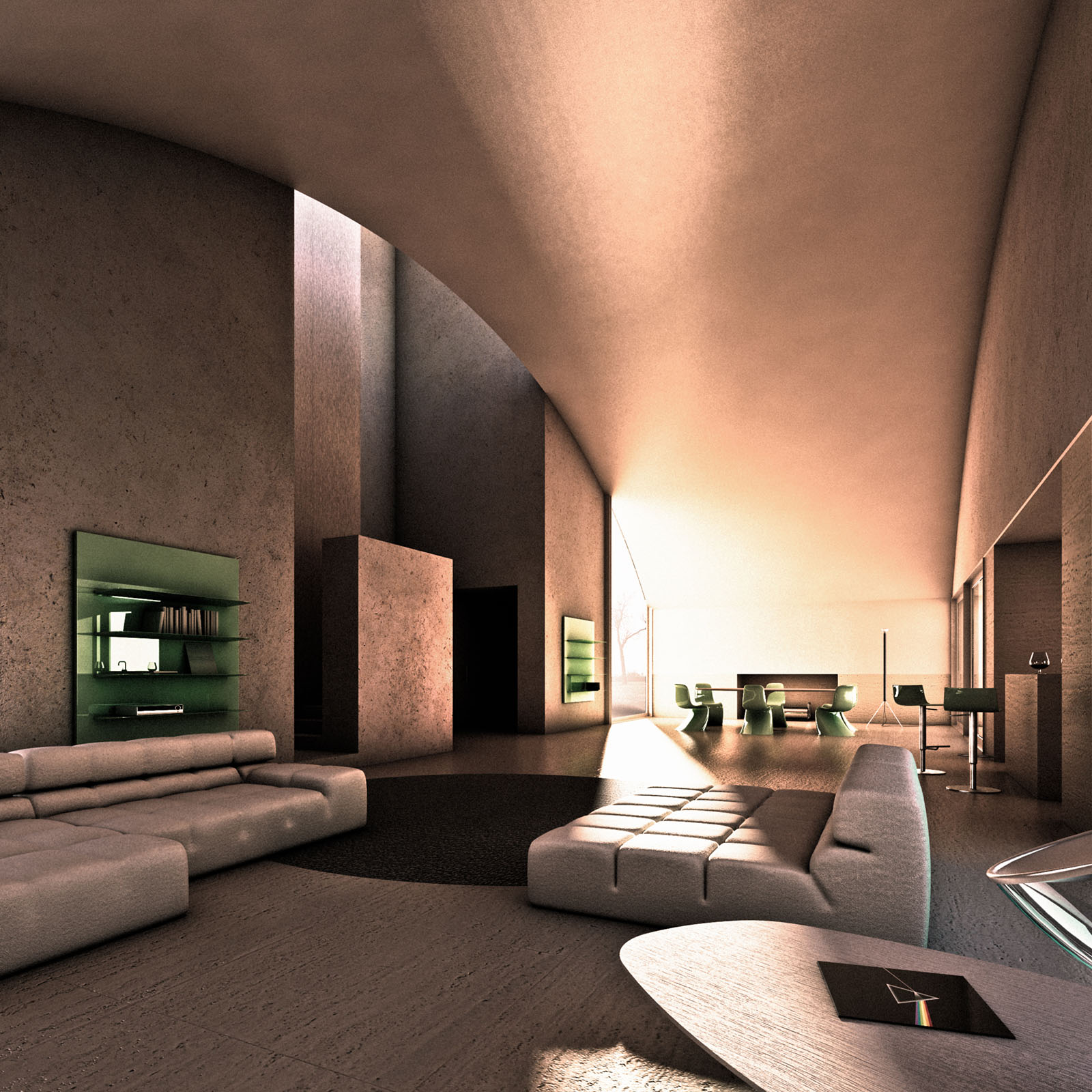
Vaulted House
The silence of a nave.
Parma, 1 January 2008

Ellipse 1501 House
In the shape of a tower.
Rome, 25 March 2007
Publications
2025 – 2007 (selected)
- Antonino Cardillo, ‘Simulazione come ermeneutica della realtà’, Artbox – Puntata del 5/3/2025 [television programme], ed. Didi Gnocchi, La7, Milan, 6 March 2025; transcript published on antoninocardillo.com, 6 March 2025.
- Rita Cedrini, ‘L'antropologia nell'architettura di Antonino Cardillo’, La camera dello scirocco, dir. Giovanni Paterna, Accademia di Belle Arti Michelangelo di Agrigento, Palermo, 8 May 2024, pp. 5, 49‑55.
- Liliana Adamo, ‘FAKEcollage. Non credo ai miei occhi!’, Dossier Collage, ed. Fabio Cappello, Rossella Ferorelli, Luigi Mandraccio, Gian Luca Porcile, Università di Genova, July 2022, pp. 35, 39.
- @ad_magazine, ‘House of Convexities by Antonino Cardillo in Barcelona, 2008’, Architectural Digest France, Instagram, Paris, 28 Feb. 2022.
- Kirsten Wenzel, ‘Der Architekt als Maerchenerzaehler’, competitionline.com, Berlin, 17 Jan. 2019.
- Teresa Morales-García, ‘Ver tocar y sentir’, Solange, no. 5, ed. Manuel Rodríguez, Rome, Sept. 2017, pp. 18.
- Jeanette Kunsmann, Stephan Burkoff, ‘Architektur und Wahrheit’, DEAR Magazin, no. 1, Berlin, April 2017, pp. 68‑85. baunetz-id.de
- Carolin Höfler, ‘Hyper desire’, paper presented to the Wunsch, Technische Hochschule Köln, Cologne, 1 June 2016.
- Fahmi Firmansyah, ‘Studi banding tema’, Pusat edukasi dan rekreasi Budaya Jombangan di Jombang: tema association with other arts on dance architecture, thesis, Universitas Islam Negeri Maulana Malik Ibrahim Malang, 27 Nov. 2015, pp. 95‑103.
- Carolin Höfler, ‘Modelle in Wirklichkeit. Die digitalen Bildversprechen von Antonino Cardillo’, paper presented to the Constructed Realities, ed. Chris Dähne, Frederike Lausch, Bettina Rudhof, Goethe‑Universität, Deutsche Architekturmuseum, Frankfurt am Main, 1 Dec. 2015; transcript published on antoninocardillo.com, 24 April 2022.
- Antonino Cardillo, ‘Faked reality’, paper presented to the Constructed Realities, ed. Chris Dähne, Frederike Lausch, Bettina Rudhof, Goethe‑Universität, Deutsche Architekturmuseum, Frankfurt am Main, 1 Dec. 2015; transcript published on antoninocardillo.com, 12 May 2021.
- Sophia Klinkenberg, ‘Body building: second skin’, Being in shape / shaping environments, thesis, Koninklijke Academie van Beeldende Kunsten, The Hague, May 2015.
- Alec Harris, ‘CISLA addendum’, Choreographing Space: the Enhancement of Architecture Through Dance, thesis, Connecticut College, New London, 16 June 2014, pp. 1(53), 4(56).
- Urs Honegger, ‘Shame on you, Designboom’, hochparterre.ch, Zurich, 25 Nov. 2013.
- Danny Hudson, ‘Antonino Cardillo rewrites history with the Purple House’, designboom.com, Milan, 16 Nov. 2013.
- Andrea Chiu, ‘The memories within architecture’, Ravenel, no. 6, Taipei City, Aug. 2013, pp. 70‑73.
- Gerard Houllard, ‘Über die mediatisierte Repräsentation von Architektur’, IACSA Newsletter, vol. 4, no. 1, International Association for Cultural Studies in Architecture, Basel, May 2013, pp. 8‑11.
- Philip Kennicott, ‘Music Holl’, Dwell, San Francisco, May 2013, p. 70.
- Hubertus Adam, ‘Analog/Digital’, S AM, no. 10, Schweizerisches Architekturmuseum, Basel, March 2013, pp. 19, 28.
- Birgit Ochs, ‘Architekturentwürfe: Es möchte echt sein’, Sonntagszeitung, no. 6, Frankfurter Allgemeine Zeitung, Frankfurt am Main, 10 Feb. 2013, p. V9.
- Teresa Morales-García, ‘La Italia más actual… se mueve’, Condé Nast Traveler, Madrid, no. 70, p. 43.
- Stefano Mirti, Gioia Guerzoni, ‘Siamo specchi l'uno dell'altro’, Opere, no. 32, Florence, Oct. 2012, pp. 4, 52‑56.
- Daniel Lordick, ‘Die Entkoppelung von Entwurf und Darstellung’, Competition, no. 2, Berlin, Oct. 2012, p. 78.
- Carl Zillich, with Fabrizio Gallanti, Lars Krückeberg, Volkwin Marg, Wolfram Putz, Peter Reischer, Andreas Ruby, Tobias Walliser, Thomas Willemeit, ‘Causa Cardillo: "Geht's noch ohne Hochstapelei?"’, bkult.de, Berlin, 10 Sept. 2012.
- Peter Reischer, ‘Grandiose Luftschlösser’, Am Sonntag, no. 32, Neue Zürcher Zeitung, Zurich, 5 Sept. 2012, p. 35.
- Christian Holl, ‘Alles nur gerendert – und jetzt?’, german-architects.com, Stuttgart, 29 Aug. 2012.
- Gabriele Detterer, ‘Phantasie und Wirklichkeit’, Neue Zürcher Zeitung, no. 164, Zurich, 17 July 2012, p. 40.
- Eleonora Carrano, ‘Il caso Cardillo: uno dei 30 architetti più importanti del mondo e l'architettura inesistente’, amatelarchitettura.com, Rome, 13 July 2012.
- Alessandro Alviani, ‘Cardillo, l'architetto delle case inesistenti’, La Stampa, vol. 146, no. 182, Turin, 3 July 2012, p. 37.
- Susanne Beyer, ‘Hochstapler: Römische Ruinen’, Der Spiegel, no. 27/12, Hamburg, 2 July 2012, pp. 3, 121‑123.
- Peter Reischer, ‘Schöner Klonen’, Falter, no. 19/12, Vienna, 9 May 2012, pp. 30‑31.
- Antonino Cardillo, ‘Purple House’, L4_House Design, A&C Publishing, Seoul, 2012, pp. 102‑107.
- Sun, ‘Bermain dengan cahaya’, Laras, no. 279, Jakarta, March 2012, pp. 88‑94, cover.
- Antonino Cardillo, ‘L'architettura: da racconto a atto interpretativo’, Inside Quality Design, no. 26, Milan, Feb. 2012, pp. 102‑107.
- Antonino Cardillo, ‘House of Convexities’, 2012 Comfortable Houses, ed. Xing Rihan, Rihan, Hong Kong, Dec. 2011, pp. 114‑115.
- Haizhen Geng, ‘对抗之美——印象派建筑师’, Interior Architecture of China, Beijing, Nov. 2011, pp. 32‑51, 56‑63.
- Vertica Dvivedi, ‘Romance with space’, Surfaces Reporter, New Delhi, June 2011, pp. 36‑41.
- Massimo Locci, ‘Sperimentazioni di Antonino Cardillo’, L’architetto italiano, no. 42, Rome, April 2011, pp. 30‑31.
- Antonino Cardillo, ‘Taking a position’, build Das Architekten-Magazin, no. 5/11, ed. Ralf Ferdinand Broekman, Olaf Winkler, Wuppertal, Oct. 2011, pp. 48‑49.
- Devyani Jayakar, ‘Purple House’, Inside Outside, no. 315, Mumbai, Sept. 2011, pp. 144‑151.
- Antonino Cardillo, ‘The colour purple’, worldarchitecturenews.com, ed. Siân Disson, London, 23 June 2011.
- Karina González Fauerman, ‘Simpleza visual’, Entremuros, Reforma, Mexico City, April 2011, p. 56.
- Fabio Rosseti, ‘Storie di luce’, AND, no. 20, Firenze, Jan. 2011, pp. 72‑75.
- Antonino Cardillo, ‘Antonino Cardillo’, MAN, no. 277, ed. Teresa Morales, Barcelona, Dec. 2010, p. 22.
- Antonino Cardillo, ‘Dream architecture: House of Twelve’, Dream Homes & Living, Vancouver, Oct. 2010, pp. 20‑21.
- Lucie Červená, ‘Stejnost a jinakost podle Antonina Cardilla’, Projekt, no. 9/10, Prague, Sept. 2010, pp. 28‑33.
- Antonino Cardillo, ‘Values transcending time’, build Das Architekten-Magazin, no. 4/10, ed. Ralf Ferdinand Broekman, Olaf Winkler, Wuppertal, Aug. 2010, p. 43, 45, 46.
- Antonino Cardillo, ‘House of Convexities’, Best selection of Shanglin, ed. Hu Yanli, Shanglin A&C, Hong Kong, July 2010, pp. 24‑27.
- Antonino Cardillo, ‘再现远古的经典——12号住宅’, Landscape Architect, no. 4/10, Dalian, July 2010, pp. 34‑37.
- Antonino Cardillo, ‘Not exactly a dime a dozen…’, worldarchitecturenews.com, ed. Siân Disson, London, 23 July 2010.
- Antonino Cardillo, ‘Max’s House in a Small Lake’, Architecture Zone, vol. I, ed. Xing Rihan, Rihan, Hong Kong, June 2010, pp. 38‑45.
- Antonino Cardillo, ‘House of Convexities’, Architecture Zone, vol. II, ed. Xing Rihan, Rihan, Hong Kong, June 2010, pp. 182‑187.
- Antonino Cardillo, ‘Vaulted House’, In Home, ed. Xing Rihan, Rihan, Hong Kong, May 2010, pp. 168‑173.
- Antonino Cardillo, ‘House of Twelve’, Schön!, no. 5, ed. Marietta Constantinou, London, March 2010.
- Antonino Cardillo, ‘Evinizle diyaloğa geçin’, Tasarim, no. 199, Istanbul, Feb. 2010, pp. 122‑127.
- Devyani Jayakar, ‘Identity and difference’, Inside Outside, no. 296, Mumbai, Feb. 2010, pp. 144‑149.
- Antonino Cardillo, ‘Identidad y diferencia’, A+A, no. 12, Mexico City, Feb. 2010, p. 9.
- Judith Jenner, ‘Ein Haus wie ein Tanz’, H.O.M.E., no. 2/10, Berlin, Feb. 2010, pp. 120‑130.
- Lucy Foster, ‘Minimalist mansion takes inspiration from the moon’, ShortList, no. 109, London, Jan. 2010, p. 8.
- Cuong Le, ‘Cá tính và khác biệt’, Nội Thất, no. 102, Hanoi, Jan. 2010, pp. 26‑34.
- Antonino Cardillo, ‘混凝土月亮屋’, Landscape Architect, no. 1/10, Dalian, Jan. 2010, pp. 2‑3.
- Ridhi Kale, ‘Poetry of space’, Home, India Today, Mumbai, Jan. 2010, pp. 46‑48, 50, 52.
- Karina González Fauerman, ‘Trazos con originalidad’, Entremuros, no. 160, Reforma, Mexico City, Jan. 2010, pp. 30‑31, 38‑41.
- Thomson Carpenter, ‘Physical poetry’, DNA, no. 119, Sydney, Dec. 2009, pp. 104‑107.
- Antonino Cardillo, ‘Living on the moon’, worldarchitecturenews.com, London, 20 Nov. 2009.
- Anonymous, ‘Convexities House’, One Magazine, no. 17, Ottawa, Sept. 2009, p. 29.
- Antonino Cardillo, ‘Ellipse 1501 House’, Collection: Houses, ed. Michelle Galindo, Braun, Berlin, July 2009, pp. 68‑71.
- Antonino Cardillo, ‘Architecture and reverberation’, Tasarim, no. 194, Istanbul, Aug. 2009, pp. 90‑91.
- Lucie Červená, ‘V rytmu flamenca’, Projekt, no. 5/09, Prague, May 2009.
- Rohan Yung, ‘Rise of the new titans’, Going Places, Malaysia Airlines, Kuala Lumpur, May 2009, pp. 44‑45.
- Devyani Jayakar, ‘A house in a lake’, Inside Outside, no. 286, Mumbai, April 2009, pp. 74‑81.
- Antonino Cardillo, ‘Ellipse 1501 House’, Concrete Design, Daab, Cologne, March 2009, pp. 136‑143.
- Antonino Cardillo, ‘House of flamingo: 弗拉明戈式建筑’, The Outlook Magazine, no. 82, ed. Daniel Qiu, Guangzhou, Feb. 2009, pp. 44‑45.
- Antonino Cardillo, ‘湖之屋苑——麦克斯住宅’, Landscape Architect, no. 1/09, Dalian, Jan. 2009, pp. 34‑37.
- Antonino Cardillo, ‘Golden aura’, Design Today, vol. VIII, no. 4, ed. Mamta Upadhyaya, New Delhi, Jan. 2009, pp. 30‑32, 34, 36, 38, 40, 42‑44.
- Antonino Cardillo, ‘Emotional space’, B1 Magazine, no. 15, ed. Jakkrit Angsutti, Bangkok, Jan. 2009, pp. 95‑98.
- Antonino Cardillo, ‘Plates 24‑27: House of Convexities’, Almanac of Architecture & Design 2009, ed. James Cramer, Jennifer Evans Yankopolus, Greenway, Atlanta, Jan. 2009, plates 24‑27.
- Antonino Cardillo, ‘Shall we dance? House of Convexities’, B1 Magazine, no. 14, Bangkok, Dec. 2008, pp. 120‑123.
- Antonino Cardillo, ‘Antik Roma karakterinde ortaçağ ruhu’, Tasarim, no. 186, Istanbul, Nov. 2008, p. 50.
- Antonino Cardillo, ‘Vaulted House, Parma’, Plan, Dublin, Nov. 2008, pp. 30‑31.
- Antonino Cardillo, ‘Антонино Кардилло’, Architects. Designers, vol. 4, exhib. cat., ed. Nikolai Fedotov, Sergei Kovaliov, Artindex, St-Petersburg, Nov. 2008, pp. 150‑151.
- Matt Hussey, ‘The house that clutter forgot’, ShortList, no. 52, London, Oct. 2008, p. 6.
- Ramia Habchy, ‘House of Convexities’, Touch Decor, no. 13, Beirut, Oct. 2008, pp. 56‑63.
- Devyani Jayakar, ‘Flamenco y arquitectura: House of Convexities’, Inside Outside, no. 280, Mumbai, Oct. 2008, pp. 116‑122.
- Bettina Dürr, Stefanie Sonnentag, ‘Moderne Architektur: Zukunftsvisionen’, Marco Polo Italien Süd, Mair DuMont, Munich, Oct. 2008, p. 14.
- Antonino Cardillo, ‘Considering coherency’, worldarchitecturenews.com, ed. Niki May Young, London, 29 Sept. 2008.
- Devyani Jayakar, ‘Vaulted House’, Home Review, vol. 7, no. 5, Mumbai, Sept. 2008, pp. 68‑72.
- Antonino Cardillo, ‘建筑的弗拉门戈之舞一一凸形住宅’, Landscape Architect, Dalian, Sept. 2008, pp. 52‑55.
- Vu Tu Tan – The Phuong, ‘Không giống ai’, Nội Thất, no. 70, Hanoi, Sept. 2008, pp. 56‑61.
- Antonino Cardillo, ‘House of Convexities’, ‘Vaulted House’, A+A, no. 3/08, Mexico City, Aug. 2008, pp. 34‑41.
- Antonino Cardillo, ‘Studio Antonino Cardillo’, Made, no. 9, ed. Benedetta Bagni, Milan, Aug. 2008, pp. 80‑95.
- Antonino Cardillo, ‘埋在石材裡的佛朗明哥舞’, DFun Magazine, no. 22, Taiwan, July 2008, pp. 38‑45.
- Antonino Cardillo, ‘Flamenco y arquitectura’, worldarchitecturenews.com, ed. Siân Disson, London, 10 June 2008.
- Antonino Cardillo, ‘Vaulted House’, L’Arca, no. 237, dir. Cesare Maria Casati, Milan, June 2008, pp. 74‑77.
- Antonino Cardillo, ‘Een onbeschreven blad’, Abstract, no. 46, Bruxelles, June 2008, pp. 14‑18.
- Antonino Cardillo, ‘几何形状住宅(二)——拱形房屋’, Landscape Architect, Dalian, May 2008, pp. 32‑35.
- Antonino Cardillo, ‘An ellipse shaped house’, Tasarim, no. 181, Istanbul, May 2008, pp. 88, 90‑91.
- Antonino Cardillo, ‘几何形状住宅(一)——1501椭圆形房屋’, Landscape Architect, Dalian, May 2008, pp. 28‑31.
- Antonino Cardillo, ‘Living in the zone…’, worldarchitecturenews.com, ed. Samy Mansour, London, 7 April 2008.
- Anonymous, ‘Italian architects today in America’, Primo, no. 9/2, Washington, April 2008, pp. 24‑25.
- Anna Krenz, ‘Pustka do mieszkania’, Vox Design, no. 8, Warsaw, Feb. 2008, pp. 54‑57.
- Antonino Cardillo, ‘Elliptical esthetics’, B1 Magazine, no. 8, Bangkok, Jan. 2008, pp. 122‑123.
- Antonino Cardillo, ‘Rough ellipse’, Perspective, Hong Kong, Oct. 2007, p. 34.
- Jordan Krosnakov, ‘Антонино Кардильо’, Мебелен Дизайн, no. 5/07, Sofia, Oct. 2007, pp. 104‑105, 108‑109.
- Antonino Cardillo, ‘Ellipse 1501 House’, L’Arca, no. 229, dir. Cesare Maria Casati, Milan, Oct. 2007, pp. 64‑69.
- Antonino Cardillo, ‘Ellipse 1501 House’, Modern Design, no. 3, Malaga, Sept. 2007, pp. 44‑47.
- Devyani Jayakar, ‘Celestial vision’, Home Review, vol. 6, no. 5, Mumbai, Sept. 2007, pp. 58, 60‑64.
- Jana Martin, ‘My concrete heart’, moli.com, New York, 20 July 2007.
- Matt Hussey, ‘Ellipse 1501 House’, thecoolhunter.net, Sydney, 5 July 2007.
- Antonino Cardillo, ‘A total eclipse’, worldarchitecturenews.com, London, 2 July 2007.